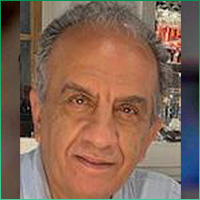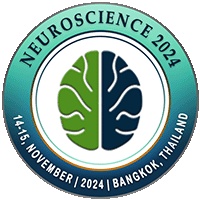
Hassan M Heshmati
Endocrinology Metabolism Consulting, LLC, USATitle: Overview of senescence and lifespan
Abstract
Senescence is a natural universal phenomenon affecting all living organisms (e.g., humans, animals, and plants). It is a multifactorial process that is induced by several stimuli including cellular stress, DNA damage, telomere shortening, and oncogene activation. Lifespan is a biological characteristic of every species. In humans, senescence is influenced by multiple factors including genetic and epigenetic factors. Senescence plays a role in the development of several age-related chronic diseases (e.g., ischemic heart disease, osteoporosis, and cancer). The maximum theoretical lifespan in humans is around 120 years. There are several ways to potentially extend the lifespan of humans. The tools that can be proposed include lifestyle, reduction of several life-threatening diseases and disabilities, hormonal replacement, antioxidants, autophagy inducers, senolytic drugs, stem cell therapy, and gene therapy. In animals, senescence is also present and influenced by multiple factors including genetic and environmental factors. The lifespan in animals is between several hours to potential eternity. The shortest lifespan is seen with mayfly (1 day). Aside from jellyfish (Turritopsis dohrnii) and hydra that are considered potentially immortal animals, the longest lifespan has been observed with glass sponge (around 10,000 years). In plants, senescence is associated with a complex deterioration of cellular metabolism that includes loss of chlorophyll, carotenoids, and proteins, and an increase of lipid peroxidation and membrane permeability, leading to a decline in photosynthesis. Multiple factors including phytohormones, sunlight, temperature, and water are involved in plant senescence. The lifespan in plants ranges from several weeks to few thousand years. The shortest lifespan is seen with annuals (few months) and the longest lifespan with Bristlecone pine (Pinus longaeva) (around 5,000 years), a tree found in the higher mountains of California (USA).
Biography
Hassan M. Heshmati, Medical Doctor, Endocrinologist, has 46 years of experience in clinical research in both Academia (University Affiliated Hospitals, Paris, France and Mayo Foundation, Rochester, MN, USA) and Pharmaceutical/Biotech Companies (Sanofi, Malvern, PA, USA, Essentialis, Carlsbad, CA, USA, and Gelesis, Boston, MA, USA). His research activity has been related to pituitary tumor, hyperthyroidism, thyroid cancer, osteoporosis, obesity, and diabetes. He has extensive knowledge in the development of antiobesity products. He is the author of 310 abstracts, chapters, and articles related to Endocrinology and Metabolism. Currently, he is Consultant at Endocrinology Metabolism Consulting, LLC, Anthem, AZ, USA.

